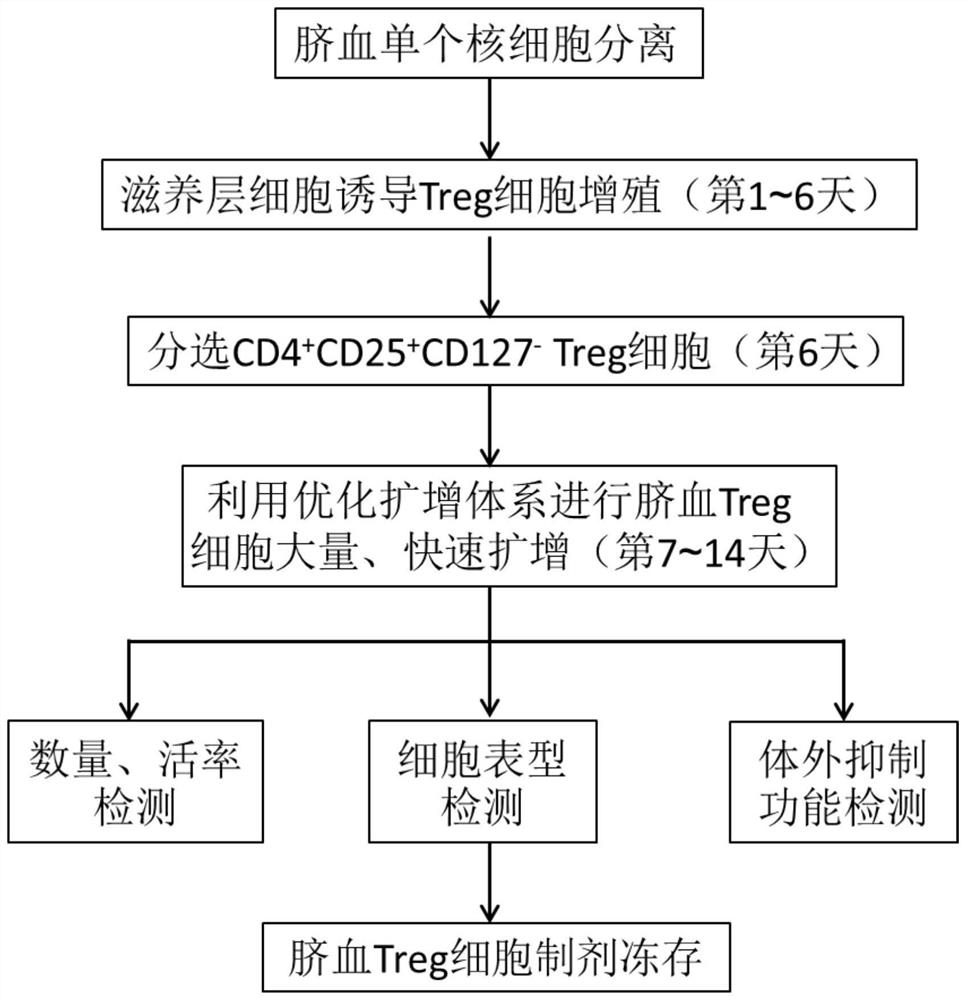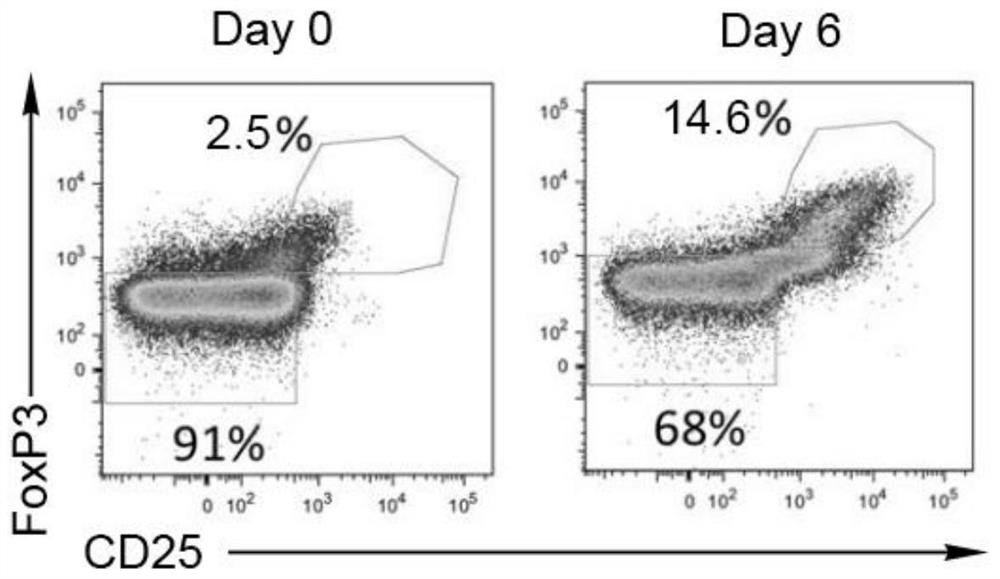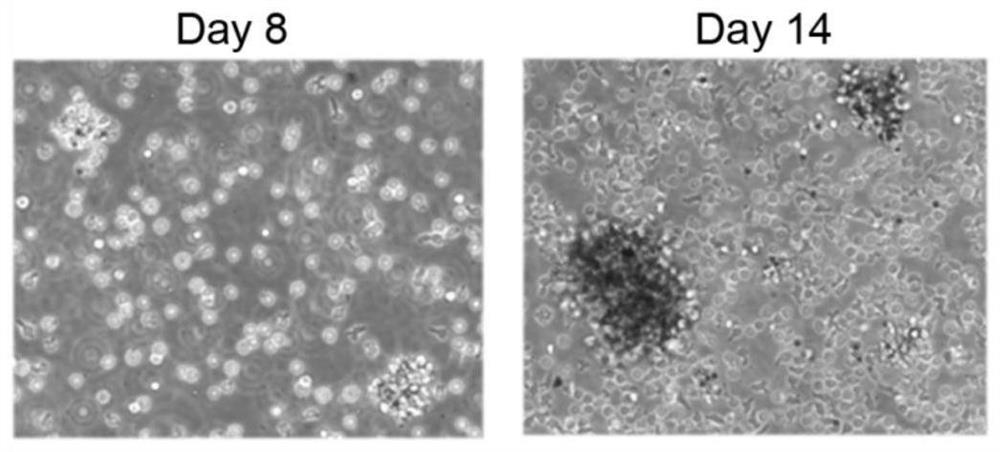Umbilical cord blood Treg cell in-vitro amplification method based on trophoblastic cells and application
A trophoblast cell and cell body technology, applied in the field of biomedicine, can solve the problems of reduced cell activity, unfavorable clinical application, unfavorable Treg cell expansion in vitro, etc., and achieves the effect of reducing quality fluctuation, low immunogenicity and enhancing activity
- Summary
- Abstract
- Description
- Claims
- Application Information
AI Technical Summary
Problems solved by technology
Method used
Image
Examples
Embodiment 1
[0056] Prepare umbilical cord blood Treg cells according to the following steps, including the following steps:
[0057] Step 1: Collect 20 mL of fresh umbilical cord blood, dilute it with 2 times the volume of PBS, and then use density gradient centrifugation to separate umbilical cord blood mononuclear cells to obtain 6.2×10 7 cells.
[0058] Step 2: Adjust the mononuclear cells to 1 x 10 with culture medium 6 cells / mL, inoculate it into the culture flask; specifically, take 5×10 7 cord blood mononuclear cells, add 50mL X-VIVO 15 medium to resuspend and inoculate into T175 culture flask, and add 1×10 8 CD3 / CD28 immunomagnetic beads (the ratio of magnetic beads to cells is 2:1); add human AB plasma and IL-2 at the same time; after adding human AB plasma is 5vol%, and the final concentration of IL-2 is 500IU / mL.
[0059] The 3rd generation umbilical cord Wharton's jelly mesenchymal stem cells were resuscitated as trophoblast cells and inoculated with 1×10 7 cells were co-c...
Embodiment 2
[0073] Cord blood Treg cells were prepared according to the same steps as in Example 1, except that the final concentration of each component after adding the optimized amplification factor in step 5 and step 6 was: human AB plasma was 10vol%, and the concentration of IL-2 was 1000IU / mL, the concentration of rapamycin is 100nmol / L, the concentration of RARA agonist is 10nmol / L, and the concentration of DNA methyltransferase inhibitor is 10μmol / L. The results show that the phenotype of Treg cells in this example is similar to that of Example 1, in which CD4 + CD25 + The positive rate was greater than 90%, and the positive rate of FoxP3 was greater than 80%. On the 14th day, the expansion factor of Treg cells was 3059.
Embodiment 3
[0075] Cord blood Treg cells were prepared according to the same steps as in Example 1, except that the final concentration of each component after adding the optimized amplification factor in step 5 and step 6 was: human AB plasma was 5vol%, and the concentration of IL-2 was 300IU / mL , the concentration of rapamycin was 100nmol / L, the concentration of RARA agonist was 1nmol / L, and the concentration of DNA methyltransferase inhibitor was 1μmol / L. The results show that the phenotype of Treg cells in this example is similar to that of Example 1, in which CD4 + CD25 + The positive rate was greater than 90%, and the positive rate of FoxP3 was greater than 80%. On the 14th day, the expansion factor of Treg cells was 1446.
PUM
 Login to View More
Login to View More Abstract
Description
Claims
Application Information
 Login to View More
Login to View More - R&D
- Intellectual Property
- Life Sciences
- Materials
- Tech Scout
- Unparalleled Data Quality
- Higher Quality Content
- 60% Fewer Hallucinations
Browse by: Latest US Patents, China's latest patents, Technical Efficacy Thesaurus, Application Domain, Technology Topic, Popular Technical Reports.
© 2025 PatSnap. All rights reserved.Legal|Privacy policy|Modern Slavery Act Transparency Statement|Sitemap|About US| Contact US: help@patsnap.com



